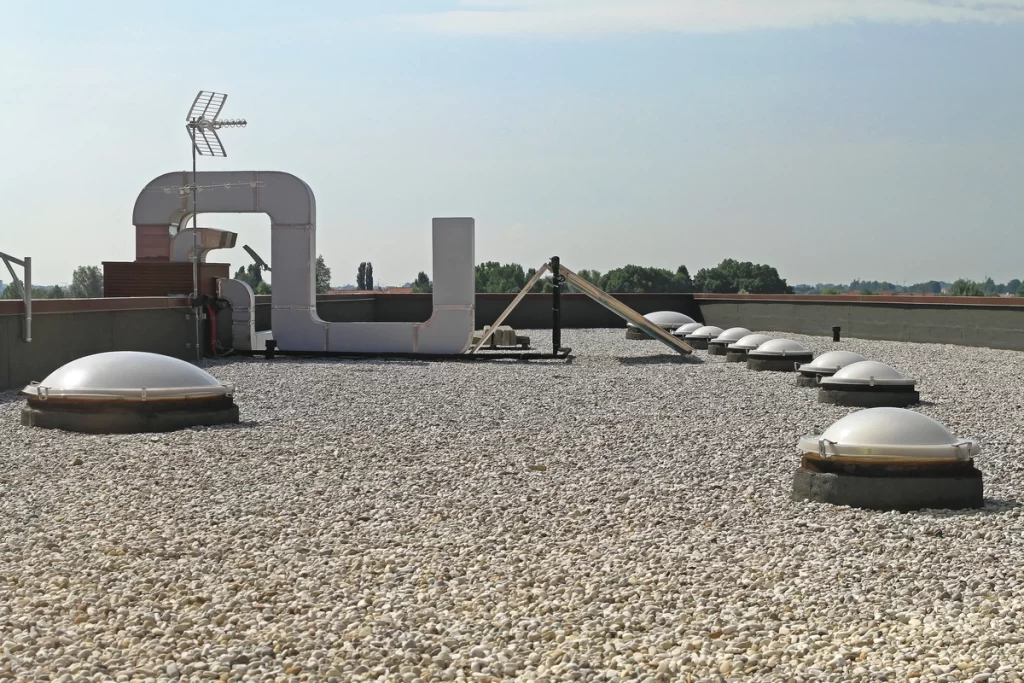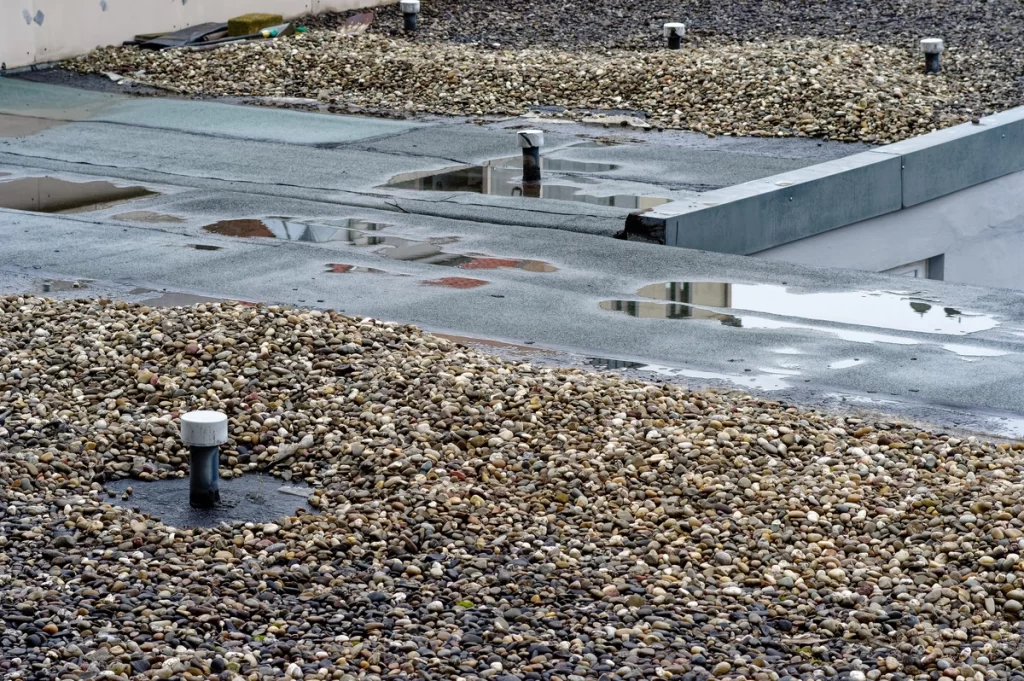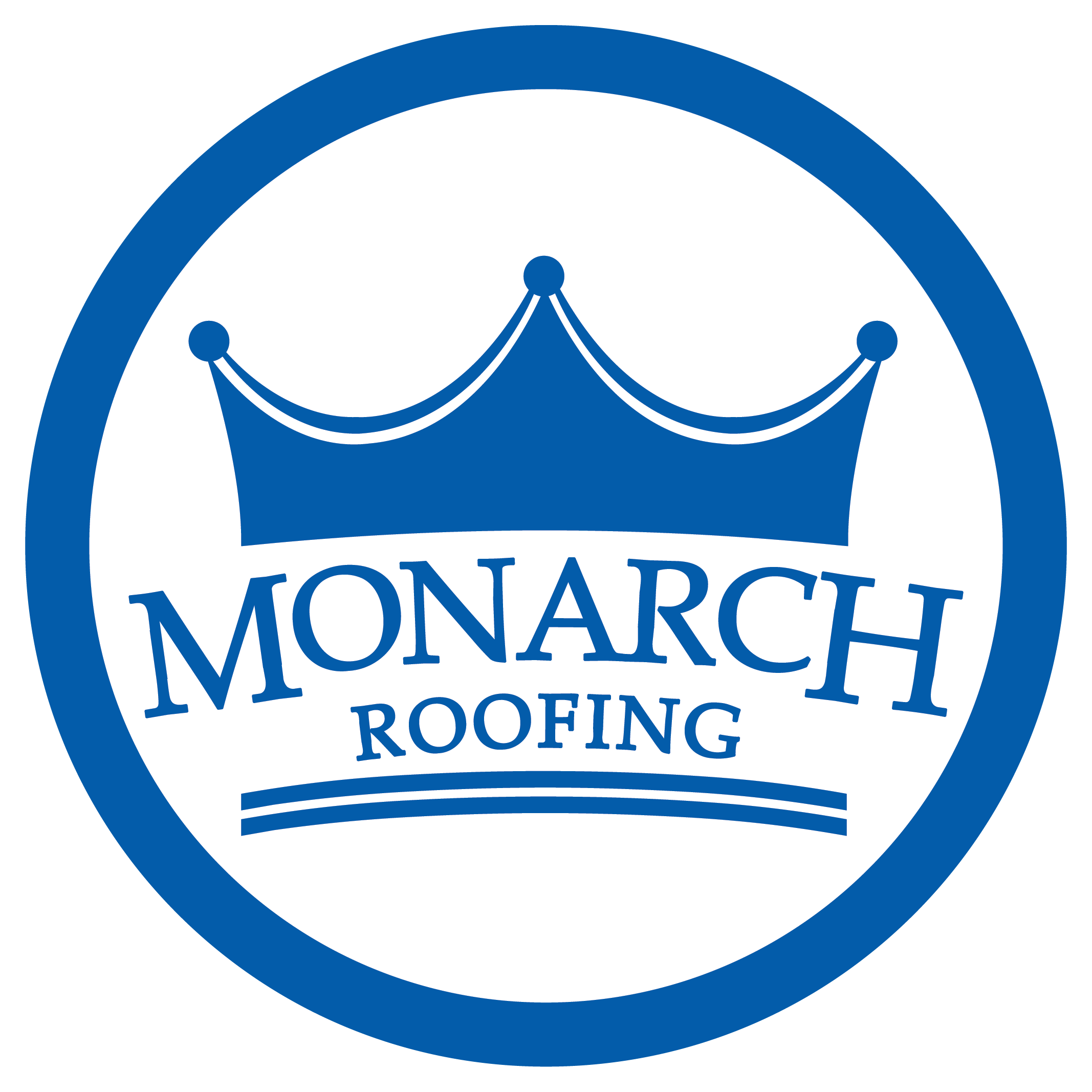Roofing is a critical aspect of any building, playing a pivotal role in protecting it from the elements. When it comes to roofing options, a tar and gravel roof, also known as a built-up roof (BUR), has been a staple in the construction industry for decades.
Need top-rated commercial roofing solutions for your property?
And considering which are the best materials, products, and more for you?
Their durability and cost-effectiveness have made them a popular choice for residential and commercial buildings alike. In this blog post, we’ll explore:
- What a tar and gravel roof is
- Its pros and cons
- The installation cost
- Its lifespan
- How to maintain it
- The telltale signs of damage that may require your attention
What is a Tar and Gravel Roof?

A tar and gravel roof, or BUR system, consists of multiple layers of asphalt-impregnated felt or fiberglass fabric, alternating with layers of hot-applied asphalt and a top layer of gravel or aggregate. This traditional roofing system has been in use for over a century, and it’s still a reliable choice in many applications.
✅ Pros of Tar and Gravel Roofs
- Durability: Tar and gravel roofs are known for their exceptional durability. They can withstand harsh weather conditions, including extreme heat, cold, and heavy rainfall. With proper maintenance, these roofs can last for several decades.
- Fire Resistance: BUR systems offer excellent fire resistance due to their multiple layers of asphalt and the absence of flammable components.
- Cost-Effective: While the initial installation cost can be moderate, tar and gravel roofs are cost-effective over their lifespan because of their durability and long-lasting performance.
- Energy Efficiency: The gravel or aggregate on the surface of a tar and gravel roof reflects sunlight and heat, which can help reduce cooling costs in warm climates. This reflective property contributes to the energy efficiency of the building.
- Low Maintenance: Tar and gravel roofs require minimal maintenance. Routine inspections and occasional repairs are usually all that’s needed to keep the roof in good condition.
❌ Cons of Tar and Gravel Roofs
- Installation Complexity: Installing a tar and gravel roof is a complex and labor-intensive process that requires skilled professionals. It’s not a DIY project.
- Weight: The multiple layers and gravel surface make tar and gravel roofs heavy. It’s essential to ensure that the building’s structure can support the weight of the roofing system.
- Potential Leaks: Over time, the seams and flashings of a tar and gravel roof can develop small cracks, which may lead to leaks if not addressed promptly.
- Limited Aesthetic Appeal: Tar and gravel roofs have a utilitarian appearance due to the gravel surface. They may not be the best choice if you’re looking for a visually appealing roofing option.
- Repairs Can Be Challenging: When repairs are necessary, finding the source of a leak or damage can be challenging due to the multiple layers. Professional expertise is essential to locate and fix issues effectively.
The Cost of Installing a Tar and Gravel Roof
The cost of installing a tar and gravel roof can vary depending on several factors, including the size of the roof, the complexity of the installation, the local labor rates, and the quality of materials used. On average, you can expect to pay between $4 to $8 per square foot for a standard tar and gravel roof installation. This cost includes materials, labor, and any necessary equipment.
Keep in mind that while the initial installation cost may be higher compared to some other roofing materials, the long-term durability and minimal maintenance requirements of tar and gravel roofs can make them a cost-effective choice in the long run.
Lifespan of a Tar and Gravel Roof
One of the key advantages of a tar and gravel roof is its impressive lifespan. When properly installed and maintained, these roofs can last between 20 to 30 years, and in some cases, even longer. The longevity of your tar and gravel roof depends on factors like climate, maintenance, and the quality of materials used during installation.
How to Maintain a Tar and Gravel Roof: 5 Steps
Maintaining a tar and gravel roof is relatively straightforward and can significantly extend its lifespan. Here are some essential maintenance tips:
1) Regular Inspections:
Conduct visual inspections of your roof at least twice a year, ideally in the spring and fall. Look for signs of damage, such as cracks, blisters, or loose gravel.
2) Keep Gutters Clean:
Ensure that your gutters and downspouts are clear of debris, as clogged gutters can lead to water pooling on the roof.
3) Address Repairs Promptly:
If you notice any signs of damage, such as leaks or cracks, contact a professional roofing contractor to assess and repair the issue promptly.
4) Maintain Proper Drainage:
Ensure that the roof’s drainage system is functioning correctly, allowing water to flow off the roof efficiently.
5) Reapply Gravel:
Over time, the gravel surface may become thin or disperse unevenly. Reapply gravel as needed to maintain the roof’s protective layer.
Signs of Damage to Your Tar and Gravel Roof

To ensure the longevity of your tar and gravel roof, it’s crucial to be vigilant and address any signs of damage promptly. Here are some common signs of roof damage to watch for:
- Leaks: Water stains on interior ceilings or walls are a clear indication of a roof leak. Investigate and repair leaks as soon as they are detected.
- Blisters or Bubbles: Raised areas or blisters on the roof’s surface can be a sign of trapped moisture or inadequate adhesion. These should be inspected and repaired by a professional.
- Cracks in the Surface: Cracks in the asphalt surface or seams between layers can allow water infiltration. These areas should be patched or repaired to prevent leaks.
- Loose Gravel: If you notice that the gravel surface is becoming sparse or uneven, it’s essential to reapply gravel to protect the underlying layers.
- Ponding Water: Pooled water on the roof’s surface can lead to premature deterioration. Proper drainage should be maintained to prevent ponding.
- Damaged Flashing: Flashing around roof penetrations, such as vents and chimneys, should be inspected for signs of damage or deterioration.
Experts on Gravel Roofing Systems
Tar and gravel roofs offer a time-tested roofing solution known for their durability, cost-effectiveness, and energy efficiency. While they may not be the most aesthetically appealing option, they provide reliable protection for residential and commercial buildings. By understanding the pros and cons, costs, maintenance requirements, and signs of damage associated with tar and gravel roofs, you can make an informed decision when it comes to roofing your home or business.
But if you need help understanding, Monarch Roofing has you covered. Contact us today to learn if a gravel roofing system is right for you!





